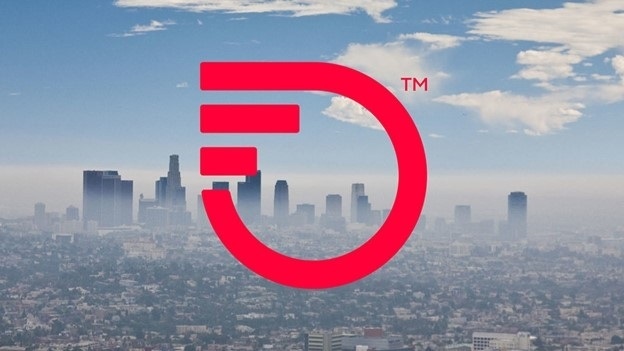Frontier hints at out-of-footprint fiber buildout opportunity
Frontier's $2.1 billion of new funding commitments via a fiber securitization deal gives the telco 'a bit of war chest' to pursue BEAD and other fiber projects beyond current build commitments, CFO says.

Frontier Communications reaffirmed its commitment to build out to 10 million fiber locations inside its own footprint by 2025 during today's Q2 2023 earnings call. But the telco, armed with critical, new funding that will cover its committed buildouts and possibly more, also hinted at interest in building fiber networks outside Frontier's existing footprint.
Those hints were dropped in soon after Frontier securitized about 600,000 fiber locations in the Dallas area, a transaction that will provide the company with $2.1 billion of additional committed capital. With debt and other financing vehicles already in play, Frontier now has about $4 billion of liquidity. Frontier CFO Scott Beasley estimates that total will fund Frontier through at least late 2025.
"The transaction provides a path to fully fund our fiber build," reduce the company's cost per capital over time and refinance traditional debt, Beasley said on today's call.
And there could be additional opportunities to securitize more fiber assets, as Dallas represented just 10% of Frontier's fiber passings at the end of 2023.
Beasley identified several priorities coming out of the fiber securitization transaction. They include a potential to accelerate Frontier's current fiber buildout and the potential to extend network buildouts beyond the company's traditional footprint, including areas that might or might not be candidates for government subsidies.
"It's a bit of a war chest to be aggressive if there are BEAD [Broadband Equity Access and Deployment] funding that we win and try to accelerate if we decide to step out of our footprint and other ways to grow the business even beyond the committed 10 million," he said, adding later that Frontier is still reviewing the BEAD opportunity inside the company's footprint.
"We are certainly interested in looking at all of the options to go beyond 10 million fiber homes passed," said Frontier President and CEO Nick Jeffery.
'Transformative' transaction
Some analysts view Frontier's asset-backed securities (ABS) transaction as a game-changer.
"We think this is transformative – by far the most important thing that has happened between the last set of results and today," New Street Research analyst Jonathan Chaplin said in a research note issued soon after Frontier released Q2 results.
Frontier is the first publicly traded telco to dive into the ABS market to secure funding for fiber-to-home infrastructure. Bloomberg notes that Allo Communications and Hotwire Communications are among other telecom companies that also have tapped into that market.
Going outside traditional footprints with edge-outs, government-subsidized expansions and other methods are taking hold across the cable and telecom landscape. As one prime example, Gigapower, the AT&T and BlackRock joint venture, is targeting builds at an initial 1.5 million locations falling outside of AT&T's existing wireline footprint and using an open access model that will enable other ISPs to run services on its new fiber networks.
Update: Fiber infrastructure assets similar to data centers, cell towers
Beasley made the case that Frontier's approach with the ABS transaction and its fiber assets is similar to the way other infrastructure asset classes, such as data centers and cell towers, have benefitted from the stability of their cash flows.
New Street's Chaplin agrees with that assessment. "We remain firm in our view that broadband assets are like towers and data centers with rising demand; an attractive market structure; high barriers to entry; pricing power; and operating leverage," he explained.
Chaplin also pointed out that the ABS market is willing – and that Frontier management confirmed – to allow leverage of 10x EBITDA and $3,400 per fiber location. Taking it a step further, 6 million fiber locations Frontier passes today arrives at an enterprise value of $20 billion and $45 per share, and $35 billion and $84 per share when factoring in Frontier's 10 million fiber location commitment, he added.
Fiber buildout and new subscriber pace slows in Q2
Frontier's original target to bring fiber to 10 million locations by 2025 continued into the second quarter of the year, though the pace of the build has slowed a tad.
Frontier said it passed an additional 316,000 new fiber locations in the period, putting it on track for 1.3 million new fiber passings for all of 2023. That build pace slowed from 339,000 in the prior quarter and came in below the 336,000 expected by analysts.
Figure 2: Click here for a larger version of this image.
Click here for a larger version of this image.
(Source: Frontier Q2 2023 earnings presentation)
"The pace of new homes slowed sequentially, which was surprising. They normally accelerate in the summer months," Chaplin noted, adding that he expects Frontier to produce a "big acceleration" in Q3.
Frontier added 66,000 fiber subscribers in Q2, up 22% year-over-year. That was below the record 87,000 added in Q1 2023 but in-line with analyst expectations. Frontier ended the quarter with 1.83 million fiber subs: 1.72 consumer fiber subs and 113,000 business fiber subs.
The second quarter of the year is typically slow for all broadband operators, but Frontier has also been impacted by other market-level activities, including price adjustments, the end of gift card promotions and the decision to unbundle some value-added services such as whole-home Wi-Fi.
However, more than half of new fiber subs are taking speeds of more than 1 Gbit/s and about one-third of those new customers are adding a value-added service, Jeffery said. That has raised the average revenue per user of new subs to the $70 range.
Frontier also addressed the lead-sheathed cabling issue that the telecom industry is grappling with. Frontier's internal, preliminary assessment found that a single-digit percentage of its roughly 685,000 total miles of metallic cabling is lead-clad. "We have no reason to believe that lead in Frontier cable has caused any health or environmental harm," Jeffery said.
Financial snapshot
Total revenues were $1.45 billion, down 0.7% year-over-year as growth in fiber-based products was offset by declines in copper-based products. Revenues were just ahead of the $1.44 billion expected by Wall Street.
Total consumer fiber-based revenues climbed 9.7% to $462 million, while copper-related revenues dropped 2% to $775 million. Business and wholesale revenues were up 0.3% to $653 million.
Frontier shares were up $1.08 (6.07%) to $18.88 each in Friday morning trading.
Related posts:
— Jeff Baumgartner, Senior Editor, Light Reading
About the Author(s)
You May Also Like











